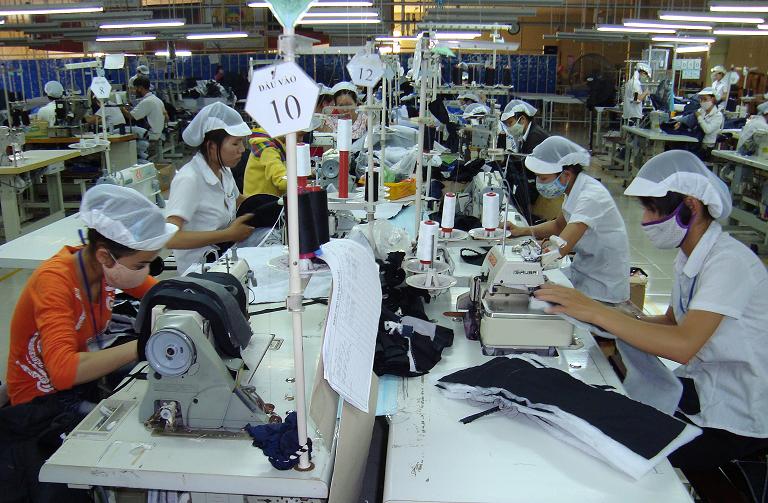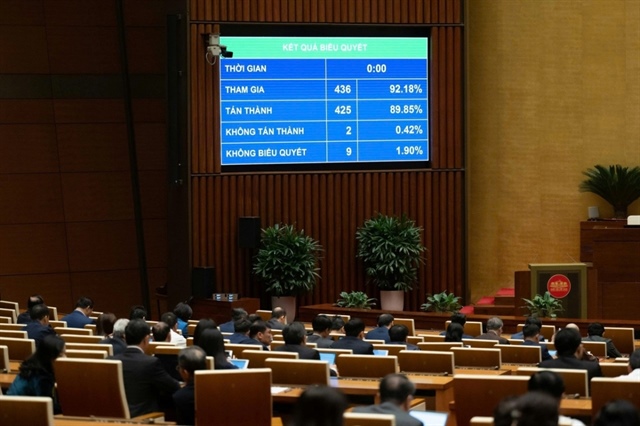TPP prompts exporters to head towards home market
TPP prompts exporters to head towards home market
Vietnamese garment exporters, from the big ones with strong brand names like Viet Tien or Nha Be, to outsourcing companies--have been gathering their strength to conquer the home market, which is believed to be more potential once the Trans Pacific Partnership Agreement (TPP) is signed.

The domestic market was never considered an important market for Vietnamese garment groups. This was the “playing field” for small companies only. However, they have changed their mind, trying to “return home.”
Making money in home market, why not?
Ten years ago, Duc Thanh Group (GDT), a wooden furniture manufacturer whose products have been present in many countries in the world, began eyeing the home market after realizing that the market’s demand was really big.
“By that time, GDT had specialized in making products for export. But one day, we questioned ourselves why we did not think of conquering the domestic market, where the demand for high quality products is really big,” said Le Hong Thang, GDT’s General Director.
GDT then began surveying the market to learn about consumers’ taste, preparing its labor force, designing the products suitable to the home market, preparing materials and setting up the distribution network.
Thang said GDT once met big difficulties on the home market, which was flooded by Chinese low-cost and low-quality products. However, the business is getting better with the turnover growing by 15 percent annually. GDT’s two brands - GDT and Winwintoys – have become well known in the domestic market.
Not only GDT, other exporters have also been reaping fruits in the domestic market, including Viet Tien Garment Company with San Sciaro and Manhattan brands, Nha Be Garment Company with Renta, Aoyama, Ann Taylor and Bitis with Gosto brands.
Nha Be reportedly has cooperated with the famous Italian designer Lucas Hubscher and well-known Vietnamese designers Lam Hong Phuc and Do Manh Cuong to build up fashion brands for the domestic market.
The thorny path
The domestic market, believed to be less choosy than foreign ones, turns out to be a difficult goal for Vietnamese exporters to attain.
In the garment market, for example, foreign brands have been favored by consumers. A report of Vinatex, the biggest garment group in Vietnam, showed that it witnessed the 3-year lowest growth rate in 2013.
GDT, though having been “conquering” the domestic market for 10 years, still has the modest revenue from the market, less than 20 percent of the total revenue in 2011-2013.
Nguyen Van Tuan, Director of the Da Nang-based An Thien Phu Company Ltd, affirmed that garment companies can make money only if they make products for export.
When fulfilling the outsourcing contracts for foreign partners, Vietnamese garments don’t have to spend money on market development, marketing and sale.
Meanwhile, they would have to pay money for these items if they want to develop the home market.
Tuan has decided to stop making garments after two years of struggling with difficulties in the export markets. He said he cannot do two things at the same time – consolidating the export markets and developing the domestic markets.
Ha Duy Hung, President of Dong Hung Group, a shoes maker, said Dong Hung spent seven years to learn about the domestic market and prepare things for the plan to develop the domestic market.
The group now makes more than 60 products of different kinds sold at average price levels. However, Hung admitted that the sale has been going slowly because Vietnamese prefer foreign brands.
vietnamnet



















